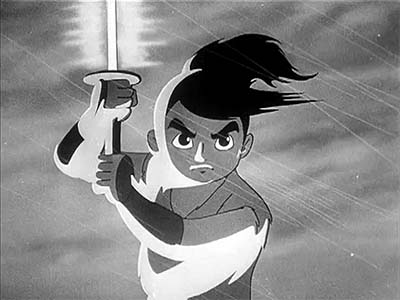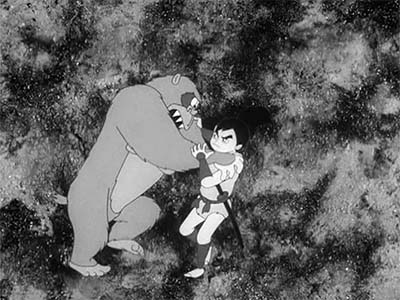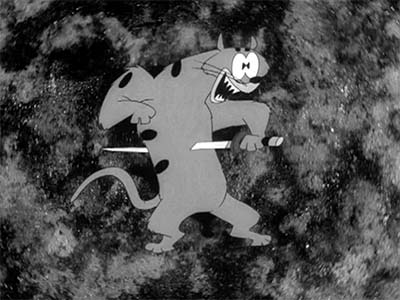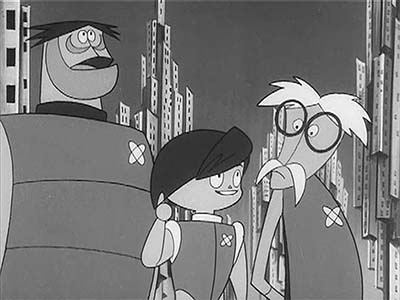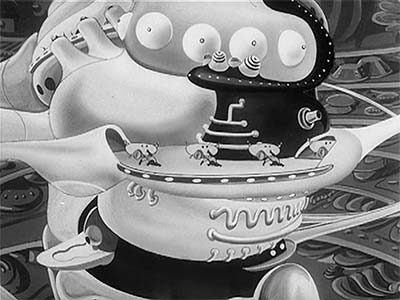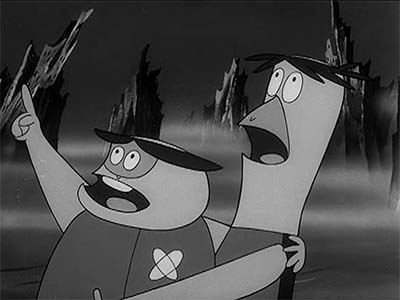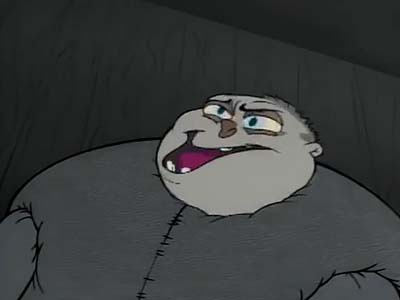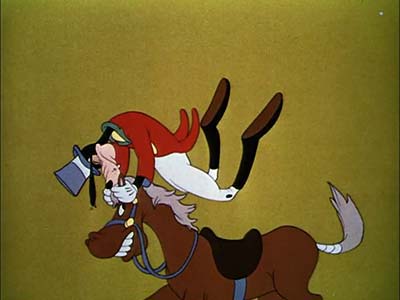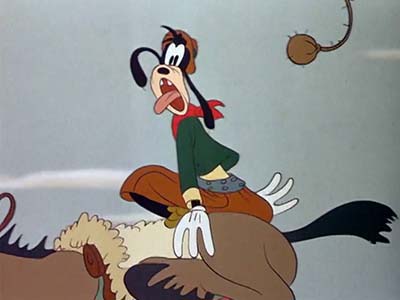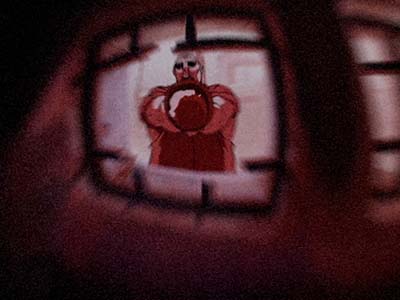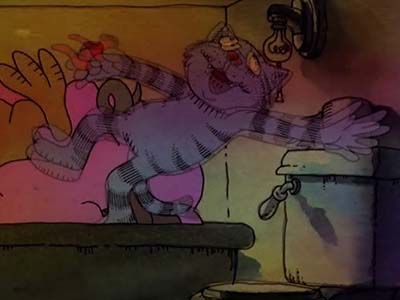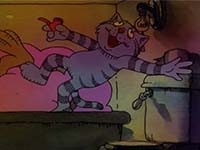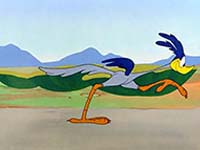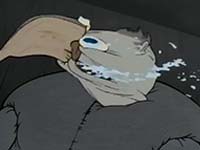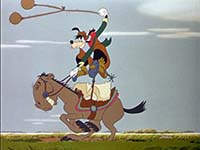People who aren’t members of Animation Resources don’t understand how comprehensive our Reference Packs are. Over the next couple of weeks, we will be posting what each section of our current RefPack looks like, starting today with the Featured section. If you are a member of Animation Resources, click on this post to go to the Members Only page. If you aren’t a member yet, today is the perfect time to join! Our current Reference Pack is one of our best yet, and General and Student Members get access to a special Bonus Archive with even more material from past Reference Packs.
What are you waiting for?![]()
JOIN TODAY!
https://animationresources.org/membership/levels/

Lately, Animation Resources board member JoJo Baptista has been researching the early history of Japanese animation. He has searched out video copies of 1960s anime to add to our Animation Archive. Over the past year, he has accumulated hundreds of hours of rare television programs. We will be will be sharing some of them with you in our Reference Packs. Our members have asked us to share complete films and publications with them, not excerpts, so we will be sharing complete half hour episodes with you. We don’t claim that everything here is great. But there are great bits. You can sift through them and discover the gems for yourself.
Shonen Ninja Kaze / Space Patrol Hopper
![]()
Curated by JoJo Baptista
![]()
Shonen Ninja Kaze no Fulimaru ep49 (1964) / Space Patrol Hopper ep03 (1965)
Download this article
Shonen Ninja Kaze no Fujimaru (Fujimaru of the Wind) follows Fujimaru, a boy who controls the wind using ninjitsu. It was produced by Toei Animation and ran from Jun 7th, 1964 to August 31st, 1965. The manga, called Ishimaru of the Wind was created by Sanpei Shirato, who had several other works adapted for release as animated series in the sixties. It is interesting to note that both Hayao Miyazaki and Yasuji Mori worked on this series. Yasuji Mori is known for his iconic animation designs throughout the early feature and TV animation eras in Japan. He also received the first animation director credit on the feature, The Little Prince and the Eight-Headed Dragon (See our previous Reference Pack for this early Japanese feature.)
At 19:53 there’s a fun sequence of Fujimaru slicing and dicing away at illusions. Snappy animation plays out as the illusions morph from one creature into another. Funny death and pain expressions too! I really like the bit at 21:08. I won’t describe it here, you’ll just have to watch it yourself!
MP4 Video File / SD / 25:26 / 345 MB Download
Also from Toei Animation is Space Patrol Hopper. It aired from Februrary 1st, 1965 to November 29th of the same year. Yasuji Mori was also a character designer and animation director on this series (for one episode). The series’ main character is a boy named Jun who receives super powers from aliens who closely resemble the Japanese mythological creatures, Kappa. He then joins their space patrol.
17:02 and 18:38 has Jun confronting some hilarious looking aliens, as he flies around them trying to dodge their attacks. I really enjoy the depth some of these shots have. It’s nice to see simple designs use the z-axis, as some characters go towards and away from the camera. They still retain their graphic appeal as well, which serves as a testament to Yasuji Mori’s design. At 19:44 there’s a brief but neat bit of Jun kicking an alien and then tackling it. I like the way the alien’s droopy body quickly swings towards Jun (three drawings) right before he does his tackle.
I’ll have more early Japanese TV series to share with you in our next Reference Pack.
MP4 Video File / SD / 24:54 / 427 MB Download

Chuck Jones cited Buster Keaton, Charlie Chaplin and Harold Lloyd as the film makers he most admired. At the Disney Studios, animators were trained in action analysis classes, studying slapstick comedies frame by frame. These films are like textbooks for animators, packed with techniques for staging, timing and gag construction. Since many of these films are difficult to find today in formats that allow easy still frame study, we will include a slapstick film in every RefPack, so you can build your own library of them to study.
Never Weaken
![]()
Fred C. Newmeyer / 1921
Download this article
In past Reference Packs, we’ve featured Buster Keaton and Charlie Chaplin, but there is another slapstick comedian who deserves mention alongside them… Harold Lloyd. I’m happy to introduce him to you with one of his best short subjects “Never Weaken”.
Lloyd’s estate retained tight ownership of his films, so they were rarely seen in the days of broadcast television; and likewise, they were slow to make it to home video, not beginning until 2005. Recently, there was a determined effort to restore and distribute his library of films, and these releases have validated the claim that Lloyd was the third genius of slapstick.
Lloyd made nearly 200 films, and his career spanned over three decades. His character, sometimes referred to as “the boy” and sometimes referred to as “the glasses character” was unique among silent comedians. Most silent films were populated by clowns with big walrus mustaches, extreme body shapes and sizes, and sterotypical tramp, silk hat dandy or cop costumes. The performance style was big and broad. Lloyd understood the fact that if you could get the audience to identify with the protagonist of the film, they would see the film through his eyes and empathize with his situation.
In an interview, Lloyd said, “When I adopted the glasses, it more or less put me in a different category because I became a human being. He was a kid that you would meet next door, across the street, but at the same time I could still do all the crazy things that we did before, but you believed them. They were natural and the romance could be believable.” Rather than stylizing and exaggerating the comic, Lloyd stylized and exaggerated the situation the comic found himself in. This was a very modern and unique approach to film comedy, breaking from its music hall and vaudeville roots and exploring cinematic storytelling on the same level as serious pictures.
A big factor in Lloyd’s success was his producer, Hal Roach. Roach built his own studio in Culver City, California in 1919 with the intent of creating the funniest comedies in Hollywood. His biggest competitor was Mack Sennett, and Roach hired away some of Sennett’s key production staff to make his films. Harold Lloyd was Roach’s top moneymaker, and other stars included Laurel & Hardy, Our Gang, Will Rogers, Charley Chase and Patsy Kelly, among others.
The combination of a top notch production staff and the popularity of Lloyd’s “glasses character” made the transition to feature length films inevitable. In 1919, he started making three reel comedies (around 60 minutes). And in 1921, production of Lloyd’s films shifted exclusively feature length films. These early comedy features pioneered the format of many films that followed— the classic structure of exposition, inciting incident, rising action, climax, and denouement. His films start with establishing characters and their relationship, then an obstacle is introduced, the characters begin to struggle, the problems rise incrementally to a big climax, which is followed by a quick “happily ever after” ending.
The film we are sharing with you today, “Never Weaken” was Lloyd’s last short film, but it hits all the marks that he would follow in his feature films over the next decade. It is one of the greatest “thrill comedies” ever made, second only to Lloyd’s feature Safety Last.
You will want to take note of the staging of the scenes. Every one is crystal clear and puts across its point lightning fast. The exposition doesn’t drag because it is full of gags that reveal both the personalities of the characters and their relationships to each other. The comedy builds as the film progresses, culminating in one of the most suspenseful thrill sequences ever put on film. Watch it through once, and then go back through it, analyzing the nuts and bolts that make it work. There’s a lot of great techniques in here for animators willing to take the time to mine it for ideas.
MP4 Video File / SD / 29:09 / 556 MB Download

One of the most popular features of Animation Resources’ social media accounts is our breakdown clips. Animation Resources board member, David Eisman shares a handful of them in each Reference Pack, along with analysis of what you can learn from still framing through the animation.
Slow Motion
![]()
Curated By David Eisman
Download this article
Slow-motion is a simple mechanical technique in live-action film making, but it can be incredibly laborious in animation. Due to the high drawing count and delicate spacing needed to create fluid slow-motion, it’s best used sparingly to create specific effects. Breakdown 05 is an example of true slow-motion, which is a version of the technique where there is a high density of frames, with tight spacing and a timing system of mostly 1s or 2s. This is an excellent example of using true slow-motion to achieve a strong impact, overlap and follow-through. The slow motion effect allows time to appreciate the exaggeration, squash-and-stretch, and subtle expressions which might have been lost at regular speed. While slow-motion was necessary in Breakdown 05, the same can not be said for Breakdown 04.
In Breakdown 04, there is no specific purpose to the slow-motion of the Roadrunner’s run-cycle other than to contrast it to when the run shifts to a high speed blur. Additionally, even though the spacing is tight, and the whole animation is timed on 1s, the run feels bland and lifeless. It lacks overlapping action and S curves to convey momentum and follow through, making the action seem stiff and floaty. If the Roadrunner’s tail, head-feathers, and wings all flapped in the breeze with different rates and cycles, then the run might be imbued with the energy that it currently lacks.
Breakdown 03 and Breakdown 06 succeed in all the ways that Breakdown 04 fails. Both of these clips feature similar action— Goofy riding a horse. Compared to Breakdown 04, Breakdown 03 and Breakdown 06 are teeming with overlapping and secondary action. In Breakdown 03, the camera is closer, shifting the focus from the horse to Goofy. In contrast with Breakdown 04 where the Roadrunner’s movement didn’t move with rhythm or flowing arcs, even the horse in this scene is animated with a mane and tail that both follow the wave principle. In Breakdown 03, Goofy’s energy is reinforced with overlapping action. His ears flop about while his coat tails waggle, and his pants bunch and wrinkle… all while he struggles to stay in the saddle. Secondary action, including a hat tip and the horse flinging the reins back add to the effect. All of these actions overlap at different rates, providing the movement with undeniable life and energy. If all these actions were synchronized, then it would feel like the character was floating in water, and the scene would lose most of its energy.
In Breakdown 06, even though both the horse and Goofy are completely in view, the motions of the horse lack the subtle fluidity of those in Breakdown 03. The mane barely sways and the tail somewhat cheats the wave principle, creating an awkward effect. The gait of the horse, however, is much more exaggerated and extreme, greatly reinforcing the slow-motion. The action in this scene is designed to be shown off by slow-motion— the way the horse’s legs fly and entangle with each other would not have read as well at normal speed. Goofy’s overlap is just as effective as in Breakdown 03. The secondary action of the boleadora lasso that Goofy swings above his head greatly benefits from slow-motion as it reacts to the momentum and gains into the camera. One of the major differences between Breakdown 03 and Breakdown 06 is that Breakdown 03 contrasts its slow-motion with regular speed. Towards the end of Breakdown 03, the timing shifts from 2s to 1s and the spacing widens, causing Goofy to bounce off the horse at regular speed. Breakdown 04 only widens the spacing without shifting the timing. Additionally, the attention to detail on the overlapping actions of the slow-motion section of Breakdown 03 reinforces the contrast with its regular speed sequence. Note how the flapping of Goofy’s coat and ears are harder to read at regular speed with wider spacing.
Breakdown 03, Breakdown 04, Breakdown 05, and Breakdown 06 are all examples of true slow-motion while Breakdown 01 and Breakdown 02 utilize different variations of the technique. Breakdown 01 is an example of timed slow-motion. Instead of dramatically tight spacing and high density of frames, Breakdown 01 instead exposes the individual drawings for varying numbers of frames. While this kind of slow-motion is certainly more economical, the exact timing needed to execute a convincing effect is difficult to achieve. While the effect in Breakdown 01 is certainly recognizable as slow-motion, the timing is quite awkward. In the first scene, where the bullet is fired, the timing is: 4, 5, 10, 1, 1, 1, 5, 6, 3, 1, 1, 4, 2, 1, 2, 5, 10, 5, 6, 2, 2, 2, 3. While this timing sequence certainly showcases slow-in-slow-out, the variation in the number of frames each drawing is exposed for makes the sequence flow awkwardly. The change from 10s to 1s is very noticeable, and it does not feel natural or fluid. Perhaps Breakdown 01 could have benefited from a more streamlined approach to timing. However, the approach to timing it takes may have been the only way to economically and convincingly achieve the effect of slow-motion.
Breakdown 02 utilizes cascading slow-motion. While such an effect could be easily achieved today with digital software, Fritz the Cat was animated before such technology was available. The effect had to be achieved in-camera. The cameraman, Ted Bemiller, would make a series of exposures, run the film back, and then make an overlapping dissolve. All of this would be planned and charted on exposure sheets. Cascading slow-motion is more economical than true slow motion, but arguably limited in its ability to express complex overlapping action. Cascading slow-motion requires a specific purpose to not feel out of place. In Breakdown 02 it is quite effective. The dissolving, translucent frames create a psychedelic effect that makes sense for conveying the effect of drugs.
Ultimately, slow-motion is an effect that must be handled delicately, efficiently and with purpose. This is especially true with true slow-motion, as the tight spacing, high density of frames, and complex overlapping action make it a very laborious technique to execute competently. True slow-motion, improperly applied, can unnecessarily waste an animators’ time and labor. Moreover, while timed slow motion is certainly more economical, the exact timing necessary to achieve a fluid, believable effect can be difficult to balance with the spacing and number of frames allotted. And finally, cascading slow motion is an effect that some might argue is more limited in its range of use than the other two variations of slow-motion.
Breakdown 45-01: “Asteroid Blues” from Cowboy Bebop (Studio Sunrise / 1998)
Breakdown 45-02: Fritz the Cat (Bakshi / 1972)
Breakdown 45-03: “How to Ride a Horse” (Disney / 1941)
Breakdown 45-04: “Beep, Beep”(Warner Bros. / 1952)
Breakdown 45-05: “Man’s Best Friend” from Red & Stimpy (Spumco / 2003)
Breakdown 45-06: “Saludos Amigos” (Disney / 1942)

Animation Resources is asking our membership to consider donating to help us establish a video podcasting studio to be able to present seminars, interviews and informal updates live streamed on YouTube and Facebook. Our goal is for 25 of our members and supporters to donate $100. If you donate $100, we will provide you with a coupon code for a free membership to give as a gift to a friend or peer, or we can credit your donation to sponsor two students for a one year student membership.
By helping others, you help yourself.
Please consider donating using the PayPal Donate Button below. For more information on our Video Podcasting Fundraiser, see the 2022 President’s Message.
![]()
![]() Animation Resources depends on your contributions to support its projects. Even if you can’t afford to donate $100 or join our group right now, please click the button below to donate whatever you can afford using PayPal. Every little bit helps.
Animation Resources depends on your contributions to support its projects. Even if you can’t afford to donate $100 or join our group right now, please click the button below to donate whatever you can afford using PayPal. Every little bit helps.















